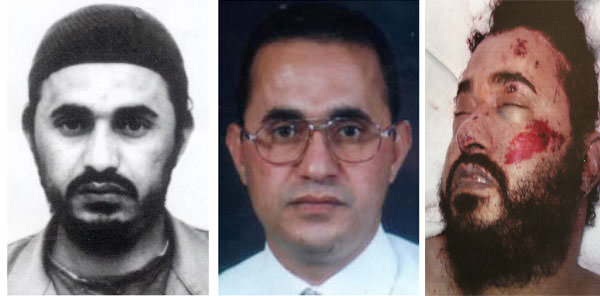 Middle East
Middle East
The Many Faces of Abu Musab al Zarqawi
Jun 10, 2006 He led Al Qaeda in Iraq, but who was he? What drove Zarqawi to his murderous ends? And what can we learn from his death? Nir Rosen, one of the only Western journalists to have reported extensively from inside the Iraqi insurgency, lays out some answers. Acclaimed Iraq journalist Nir Rosen explores the life, death and intellectual underpinnings of the terrorist who led Al Qaeda in Iraq. 1 2 3 4 5Salafism found a home in Jordan beginning in the 1970s when a Syrian cleric called Muhamad Nasir al Din al Albani began teaching in Jordan at the invitation of the Muslim Brotherhood. Eventually he settled in the Jordanian city of Zarqa to avoid persecution by the secular Syrian Baathists, and began preaching about the need to purify Islam. Hundreds came to hear him speak, and he influenced the ranks and hierarchy of Jordan's clergy. The regime was threatened by the crowds he drew, and Albani was prohibited from speaking in public. Unable to operate openly, Salafism became an informal underground movement. The late 1970s were a crucial period, as the leftist, secular and nationalist projects in the Arab world appeared to be failing. Saudi radicals rose up against their regime, temporarily taking the mosque in Mecca; the Soviet army invaded Afghanistan; and the Iranian revolution inspired political Islamists who meant to overthrow Sunni regimes. By the early 1980s Arab regimes decided to dispose of their excess radicals by dispatching them to the Afghan jihad.
Jordan was a ripe environment for political Islam. Ever since the British had created the country in 1924, the kingdom was ruled by the Hashemites, or Albu Hashem, descendants of the Prophet Mohammed, who gained their legitimacy by belonging to Ahl al Beit, or the family of the Prophet. In 1970, when Jordanian King Hussein fought an uprising of nationalist Palestinians, some of whom promulgated the slogan "The liberation of Jerusalem begins in Amman," the Muslim Brotherhood, previously disenfranchised, supported King Hussein, and the king rewarded them by granting them control over the Ministry of Education, allowing them to inculcate generations of Jordanians. Founded by Egyptian Hassan al Banna in 1928, it sought to establish a Muslim state -- though not through violence.
Radical Islam had received a needed fillip from the Afghan jihad that began in 1979, but it was after the Gulf War of 1991 that jihadism became an international ideology. The Saudi government's dependence on the American infidels to protect its country from Saddam Hussein, and U.S. presence in the holiest Muslim land, coincided with increasing Muslim resentment of their own governments. Arabs who had fought in the Afghan jihad began returning home and were disillusioned with what they encountered and sought to bring the jihad home too. The Israeli peace process was but one more betrayal for them.
Zarqawi's aggressive personality attracted the tough young men imprisoned with him--while [his mentor] Maqdasi was relegated to a theological position, issuing fatwas. |
Also following the Gulf War, Kuwait expelled hundreds of thousands of Palestinians, most of whom settled in Jordan. Returning Jordanian jihadis were repelled by the ostentation that accompanied the arrival of wealthy Palestinians in their poor country. One such jihadi was Abu Musab al Zarqawi, who would lead the Tawhid and Jihad organization of Iraq, later known as Al Qaeda in Iraq.
Other Palestinians brought with them a radical jihadist Salafi ideology. One such person was Abu Anas al Shami, who went on to become Zarqawi's key cleric and religious advisor in Iraq. Another was Abu Muhamad al Maqdasi, the most important ideologue for modern jihad today, and Zarqawi's former mentor.
Maqdasi's writings influenced the Sept. 11, 2001, attackers and the 1995 bombings in Saudi Arabia that targeted Americans. His relationship with Zarqawi dates back to Afghanistan in the late 1980s and early 1990s (it is unclear exactly when), where the two met during their jihadist struggles.
Maqdasi was a self-taught Palestinian cleric living in Kuwait. Like many Palestinians who relocated to Jordan, Maqdasi had belonged to an important Kuwaiti Salafi organization called Jamiyat al Turath al Islami, or the Society of Islamic Heritage, which was characterized by a willingness to ruthlessly kill civilians. Upon arriving in Jordan in 1991, Maqdasi took control of Jordan's Salafi movement, composed of Jordanian and Palestinian Salafis who had fought or trained in Afghanistan. Maqdasi called his organization Tawhid, or monotheism, but later changed the name to Bayat al Imam, Oath of Loyalty to the Leader.
When Zarqawi returned to Jordan from Afghanistan in 1993, he sought out former mujahedin he had met in Afghanistan, including Maqdasi. The two began planning jihadist operations and were arrested and jailed in 1994 for possession of weapons. They would spend the next five years behind bars.
In prison, the awkward and solemn Zarqawi began to bloom in his own jihadi way, while Maqdasi, despite the anger and violence of his ideas, avoided conflict. The Jordanian authorities had placed all the Islamist prisoners together and in isolation from other prisoners, and Zarqawi's aggressive personality attracted the tough young men imprisoned with him--while Maqdasi was relegated to a theological position, issuing fatwas.
The time these Islamists spent in Sawaqa prison would prove just as important to the development of their movement as the jihadist experiences they shared in Afghanistan. The time in confinement bonded men who suffered together and gave them time to formulate their ideas. For some it was educational as well, giving them time to study jihadi texts, improve their Arabic and organize into groups.
Next Page: In Afghanistan Zarqawi found both Al Qaeda and the Taliban insufficiently extreme for him.
You need to be a supporter to comment.
There are currently no responses to this article.
Be the first to respond.